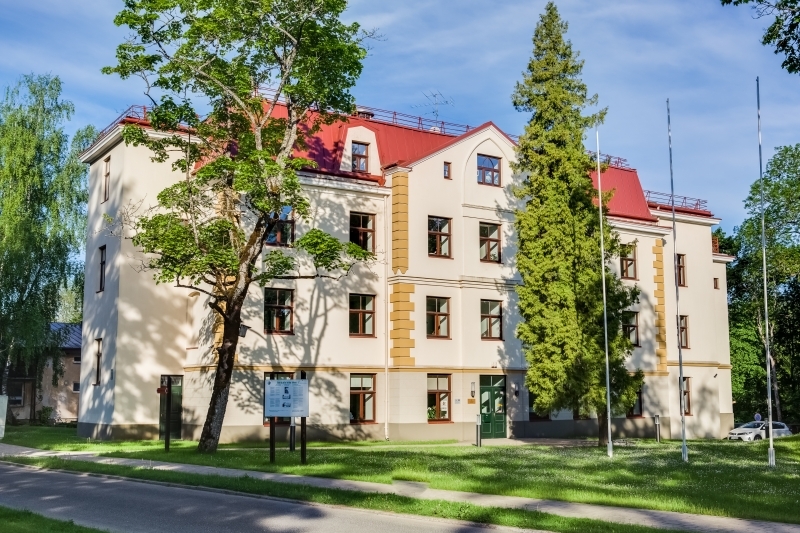
Originally constructed as a residence of Knyaz Nikolai Kropotkin's family, later remodeled into a boarding-house and rented out.
| Address | Baznīcas iela 7, Sigulda |
| Coordinates | 57.163494 24.851676 |
| Phone | +371 67971335 |
| www | www.tourism.sigulda.lv |
Originally constructed as a private home at the end of the 19th century. In the beginning, it was the residence of Knyaz Nikolai Kropotkin's family. When the Knyaz and his family moved to the New Castle, this building was remodeled into a boarding-house and rented out.
After the agrarian reforms, Erna Poruks, the widow of the poet Janis Poruks, cared for the house. In 1927 the building was again remodeled and thereafter provided lodging for both domestic and foreign guests.
In 1935 the building was converted for use as Sigulda High School which significantly changed its appearance. Following World War II, it was the home of a variety of learning facilities and then remained relatively abandoned for quite some time. For many years, bats were its only inhabitants.
During 2006 to 2007, the Gauja National Park administration, with assistance from EU subsidies, worked to restore the building to its original splendor. The building, on Baznicas/Church street, has been part of the National Park since its inception and originally housed administration. It is currently the location of the Nature Conservation Agency Office of the Vidzeme region.
Gauja National Park was established in 1973, but the idea of creating such a park goes further back. It was originally founded in the 1920s as Sigulda National Park and covered 600 hectares stretching from the banks of the Gauja River. During the Soviet era, it was renamed the “People’s Park” to avoid the then subversive use of the word “national.” With the demise of the Cold War, it once again became a National Park. Nowadays, it is one of the most popular destinations for outdoor recreational activities and the second most visited tourist area after Riga.
Gauja National Park was founded to protect the ancient Gauja river valley which has unique natural features. The length of the Gauja River is 452 km from which 93.5 km flow through the valley making up the core of the National Park. The valley itself includes both wild and minimally disrupted natural areas as well as historic landmarks and monuments of the past. Nearly every major ecosystem is represented and it has vast biodiversity. The park is the perfect place to enjoy not only nature and the panorama of the valley but all of the man-made objects as well. The best way to do this is either on foot or by bicycle or row-boat.
Next to the White Castle is a basement that once was used as a fallout shelter against air attacks. Due to its unvarying year-round temperature, it is a favorite over-wintering spot for bats.












